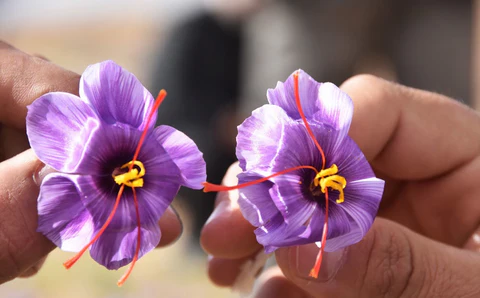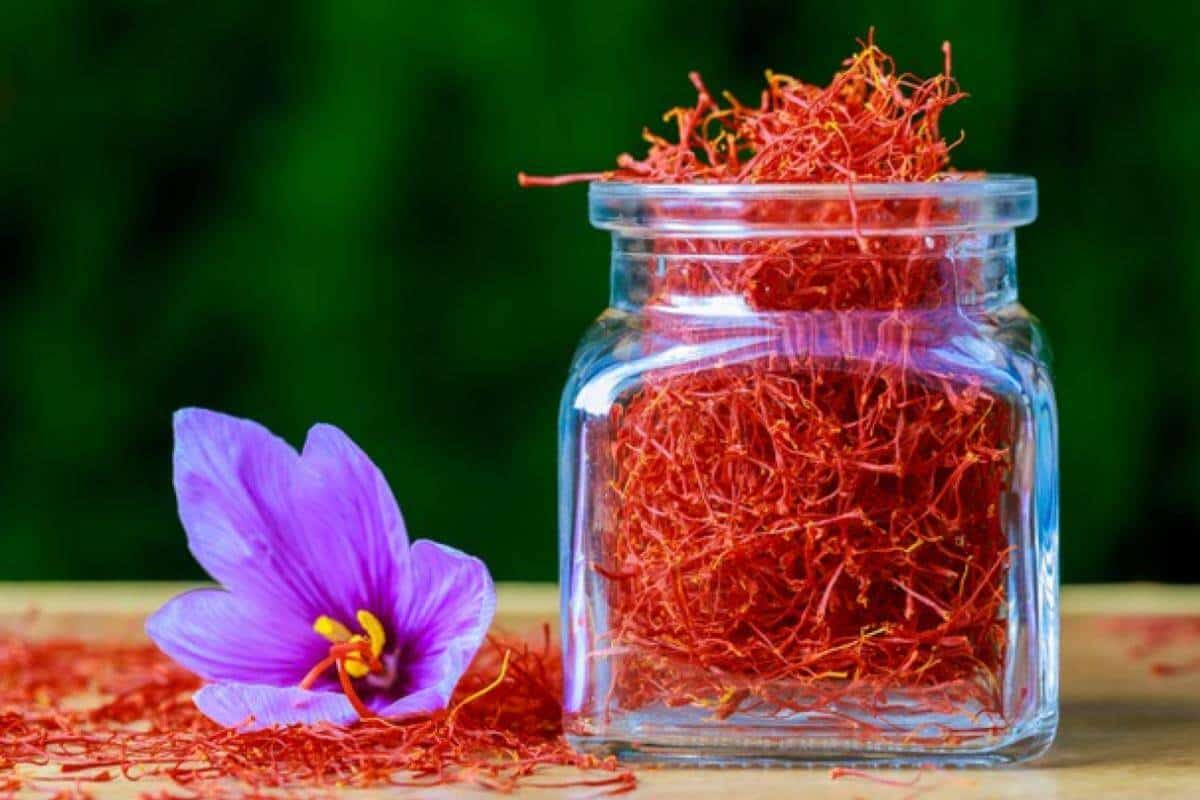Saffron is often called “red gold,” and for good reason. It is the most expensive spice in the world, with costs ranging from hundreds to thousands of dollars per pound depending on its origin and quality. For anyone asking, why does saffron cost so much? the answer lies in its rarity, labor-intensive harvest, cultural importance, and global market dynamics. Understanding saffron’s cost is not just about numbers; it is about history, geography, and the delicate threads that make it priceless.
A Quick Overview of Saffron Cost
Here is a simple table that highlights the key aspects that influence saffron pricing:
| Aspect | Explanation |
| Plant Source | Derived from the Crocus sativus flower, which blooms only for a few weeks each year. |
| Harvest Process | Each flower produces just 3 red stigmas; hand-picking requires thousands of flowers for a single ounce. |
| Global Origins | Iran produces over 85% of saffron; other producers include Spain, India (Kashmir), and Afghanistan. |
| Quality Grading | Prices vary by color, aroma, and purity; top grades fetch the highest prices globally. |
| Average Cost | From $500 to $5,000 per pound depending on quality and region. |
| Symbolic Value | Used in cuisine, medicine, rituals, and luxury trade for centuries. |
Why Saffron Is So Expensive
The cost of saffron begins in the field. The Crocus sativus flower blooms in autumn and must be harvested at dawn when its delicate petals open. Each flower contains only three tiny stigmas the saffron threads. To produce one pound of saffron, farmers must hand-pick more than 75,000 flowers.The harvest is not mechanized; it depends on skilled labor. Every thread must be separated by hand and dried carefully to preserve its fragrance and potency. This labor intensity, combined with the fragility of the crop, makes saffron one of the costliest agricultural products in the world.
Historical Significance of Saffron Pricing
The high cost of saffron is not a modern phenomenon. In ancient Persia, Greece, and Rome, saffron was worth its weight in gold. It was used to dye fabrics, flavor food, and as a medicine. In medieval Europe, saffron was traded across long distances, often carried along the Silk Road, where its price reflected not only scarcity but also prestige.At times, saffron was so valuable that it was taxed or even counterfeited. Historical records from the Middle Ages describe severe penalties for those caught adulterating saffron with substitutes. Its high value made it both desirable and vulnerable to fraud.
Global Variation in Saffron Cost
Saffron prices vary widely depending on the country of origin and quality of the threads.
- Iran: The largest producer, with relatively lower prices due to large-scale supply, though top-grade Iranian saffron remains costly.
- Spain: Known for La Mancha saffron, which carries a Protected Designation of Origin (PDO) label, ensuring quality and higher prices.
- Kashmir, India: Considered among the rarest and most aromatic saffron types; its scarcity often makes it more expensive than Iranian varieties.
- Afghanistan: Emerging as a competitor with high-quality saffron, marketed as an alternative to Iranian supply.
The global saffron cost is shaped by supply chains, trade policies, and regional branding.
Saffron Grading and Price Differences
Saffron is not uniform. It is graded based on color, aroma, and purity:
- Premium Grade (Negin): Deep red threads, highly aromatic, sold at premium prices.
- Grade I (Sargol): Pure red stigma tips with strong coloring and aroma.
- Grade II (Pushal): Contains some yellow parts of the style, less concentrated but still valuable.
- Lower Grades: Mixed or adulterated saffron sold at cheaper rates, often used in bulk.
The grading system reflects quality and directly influences market value. Top grades can cost five to ten times more than lower grades.
Modern Market Trends in Saffron Cost
In recent years, saffron has faced both price surges and fluctuations due to climate change, shifting demand, and global trade restrictions. Drought in regions like Iran and Kashmir reduces supply, which pushes prices higher. At the same time, counterfeit saffron made from dyed corn silk, marigold, or beet fibers threatens the market’s integrity.Online marketplaces have made saffron more widely available but also increased the risk of adulteration. This duality keeps buyers cautious and continues to sustain the spice’s reputation as “red gold.”
Saffron in Cuisine and Its Value
The cost of saffron is justified not only by its rarity but by its unique culinary impact. A few threads are enough to flavor and color entire dishes. Spanish paella, Indian biryani, Persian rice, and French bouillabaisse all depend on saffron for their signature taste and aroma.Restaurants that use authentic saffron build its cost into the price of fine dining. Home cooks, too, consider saffron an investment an indulgence that elevates meals.

Cultural and Symbolic Dimensions of Cost
Beyond food, saffron’s cost carries symbolic weight. In South Asia, saffron is associated with purity and spirituality, often used in religious rituals. In ancient Europe, it was a symbol of wealth and nobility.Its cultural importance amplifies its price because demand is not purely practical. People buy saffron not just for flavor, but for the prestige and meaning attached to it.
Comparing Saffron to Other Expensive Spices
Saffron often tops the list of costly spices, but how does it compare?
- Vanilla: High-quality vanilla beans can cost hundreds of dollars per pound, largely due to labor-intensive pollination.
- Cardamom: Prices fluctuate but are generally lower than saffron, though still among the world’s priciest spices.
- Clove and Cinnamon: Valuable historically, but far more affordable today compared to saffron.
Even among luxury spices, saffron remains unmatched in cost because of its low yield and global prestige.
Economic and Social Impact of Saffron Farming
In regions like Iran and Kashmir, saffron cultivation is not just agriculture it is a way of life. Entire communities depend on the saffron harvest for income. The high cost of saffron sustains local economies but also creates vulnerability. A poor harvest season can devastate farmers’ earnings.Government initiatives in countries like Afghanistan promote saffron farming as a sustainable alternative to other crops, reflecting the spice’s potential for positive economic impact.
The Future of Saffron Cost
Looking ahead, saffron will likely remain expensive. Climate change threatens its delicate growing conditions, while global demand continues to rise. Some researchers explore hydroponic or greenhouse saffron farming to stabilize supply, but such innovations remain costly themselves.The future of saffron cost may depend on balancing traditional farming with modern methods, protecting authenticity while expanding accessibility.
Conclusion
Saffron cost reflects far more than numbers on a market chart. It reflects centuries of history, traditions of labor, and the continuing allure of one of the world’s rarest spices. From ancient rituals to modern kitchens, saffron’s price is justified not just by scarcity but by symbolism, taste, and cultural value.For those who ask why saffron is so expensive, the answer is clear: it is not simply a spice it is heritage, luxury, and human labor woven into red threads.
Frequently Asked Questions (FAQs)
1. Why is saffron so expensive?
Saffron is costly because each flower yields only three tiny stigmas, which must be hand-harvested in large quantities.
2. How much does saffron usually cost per pound?
Depending on origin and grade, saffron costs anywhere from $500 to $5,000 per pound in today’s global market.
3. Which country produces the most saffron?
Iran produces over 85% of the world’s saffron, though Spain, Kashmir in India, and Afghanistan also supply high-quality varieties.
4. How can I tell if saffron is real or fake?
Real saffron threads are deep red with a honey-like aroma. Fake saffron is often dyed, brittle, or lacks fragrance.
5. Do a few saffron threads really flavor a dish?
Yes. Even a small amount of saffron can color and flavor an entire dish, making it economical despite its high price.
.

